The automotive world is like no other, and it is an area where ambitions and reality can collide in the most unpleasant of ways. That is the lesson that was learned the hard way by Earl “Madman” Muntz when he set out to produce the Muntz Jet. The Jet was by no means a bad car, but it was a car that lost its creator a small fortune during its production run between 1951 and 1954. This Jet will require a complete restoration, but given the sort of money that they are capable of attracting today, it is certainly worth a look. Located in Houston, Texas, the Muntz is listed for sale here on eBay. The owner has set a BIN of $17,500, but it appears that he is willing to listen to offers.
Early versions of the Jet were built with aluminum bodies on steel frames, but the body material was soon changed to steel. This added considerable weight to the car, but it was actually a change for the better. Early customers did complain about how easily the car’s aluminum panels could be dented, which was one of the unfortunate drawbacks of such a soft material. This Jet is said to sport an aluminum body, which would also make it a very early example because only early cars built in California featured these bodies. Exact numbers aren’t clear, but it is believed that somewhere between 28 and 40 cars were built in Glendale, California, before production was relocated to Evanston, Illinois. The floors and frame look to be good, with no signs of major rust or rot. The current owner purchased the car back in 1958, and it isn’t clear whether he was the person who commenced the restoration. It doesn’t appear as though there are any major issues with the car, but a careful check will need to be made to ensure that all of the body hardware and external trim is present. Sourcing replacement items will range somewhere between extremely difficult, and impossible.
“Madman” was determined to ensure that his Jet was the height of luxury, and he certainly didn’t skimp on the interior trim. Leather “tuck and roll” upholstery was a standard feature, while the range of available equipment extended all the way to a liquor cabinet and icebox built into the rear seat armrests. Unfortunately, the interior of this Jet really is a case of “what you see is what you get.” The seats and much of the interior trim is missing, which is sure to cause the next owner more than a little heartburn. Sourcing these items is bound to be difficult, especially given the fact that only around 198 cars were eventually built. The low build numbers was probably a blessing in disguise for the illustrious Mr. Muntz. He was selling the Jet for around $5,500, which was still considerably more than the price of an equivalent Cadillac. However, the cars were actually costing him around $6,500 to produce, meaning that he was losing approximately 20% on every car sold. That was something that was unsustainable and is the reason why production eventually ended in 1954.
Peering into the engine bay reveals the 331ci Cadillac V8 engine. This should be backed by a 3-speed Hydramatic transmission, although a rare Borg Warner manual transmission was available as an option on the Jet. Standard equipment also extended to power steering. The owner doesn’t indicate whether the engine is original, or what state it’s in. Once again, the big question will be just what else in the way of engine hardware is included with the car, because the engine bay looks quite bare, and locating parts is going to be quite hard.
The person who elects to take on the restoration of this 1951 Muntz Jet is going to need to be an exceptionally brave person. Their biggest challenge is going to be sourcing the parts that are so obviously missing from the car. Ultimately, it could be a rare and quite valuable piece of machinery, but I suspect that the path to this outcome is going to be strewn with heartache. It is also worth noting that this is an early example that was built in California, making it the rarest of the breed. This will also have a significant impact on its value in the long run. A value well into the six-figure territory is definitely possible, so would you be prepared to deal with the heartache to achieve this goal?
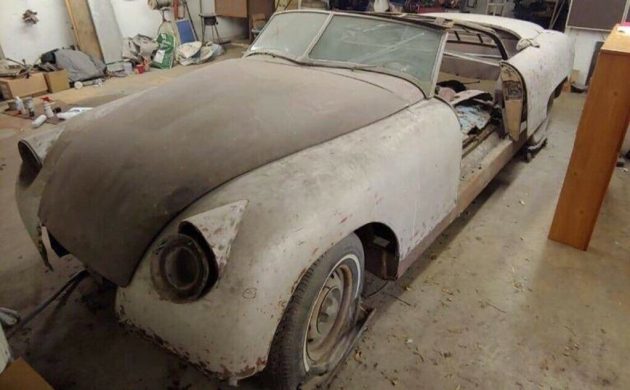
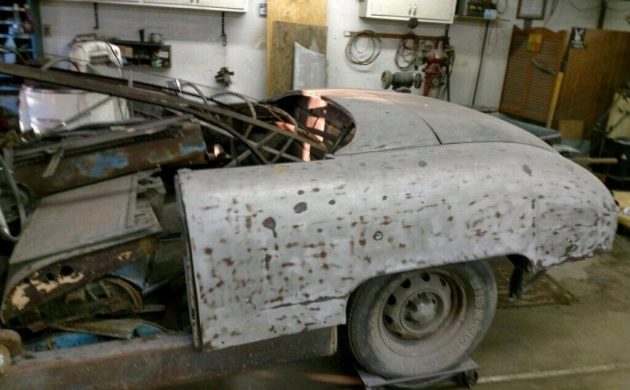
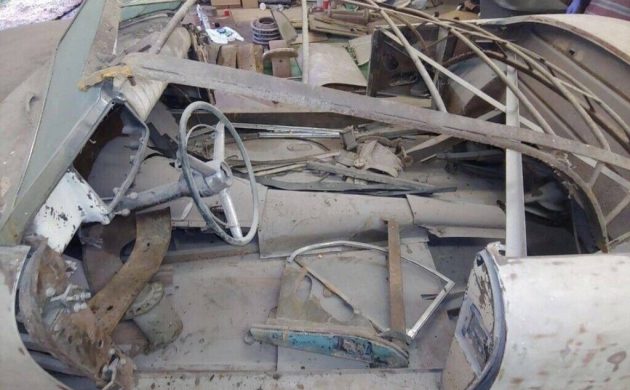
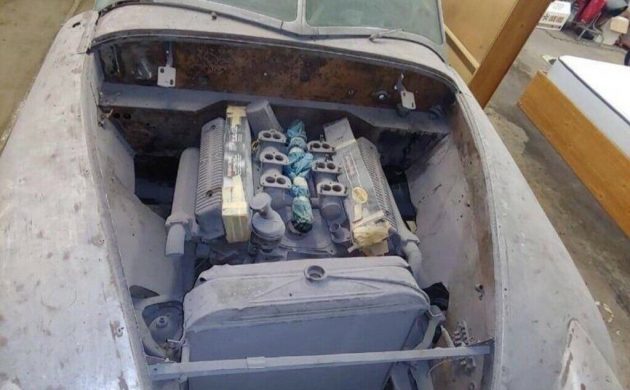
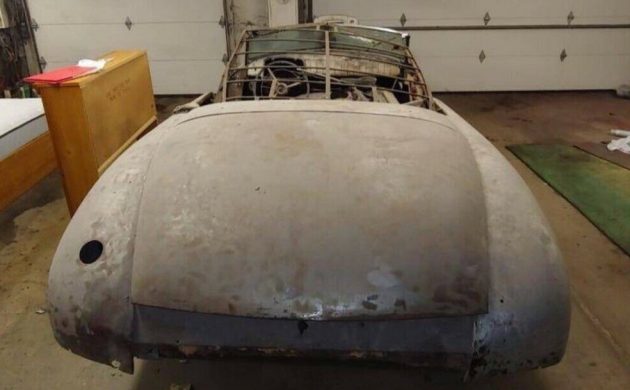


This is a car for someone with “Deep:” pockets.
It takes money to make money; if a buyer has the wherewithal-and very good car restoration connections-this will be a truly unique machine for a true gear head ( hey Jay L.-if you’ve one of these will you give a fellow enthusiast a hand knowledge-wise?).
Patience, time, money, and money-did I mention it’ll take some money? But if you’re the buyer and in it just for the money, you’ll never get all the value from the restoration..
This car needs to be restored. Already rare to begin with,and a body made from aluminium. But, I would bet it’s going to be a long while waiting for parts. With so few built, there isn’t going to be a lot of parts car’s. But this car should eventually be in Pebble Beach. GLWTS
Adam, I was surprised to read your article and find one glaring omission: no mention of Frank Kurtis!
Earl Muntz acquired the rights to the “Kurtis Sport Car” built by the legendary builder of Indy roadsters, sprint cars and midgets (and sports cars!) and had the first few built in Kurtis’s shop before transferring production to Evansville. Not certain, but I believe Jets were available with either Cadillac or Lincoln engines.
The “Madman” added a lot of luxury touches, as well as space for two more occupants. He lost a ton of money on the project, as you point out, while the creator went back to building winning Indy cars and the “500S” cycle-fender sports car.
The next owner/restorer will face an enormous task getting this back to first-class shape. It will be worth it.
Six Stromberg 97s. Makes you wonder what’s inside the engine.
So do the ribbed rocker covers, which look more like Continental than Cadillac to me….
That’s just an offhand impression. I’m in no way an expert.
Ray T,
I agree, that’s a Lincoln engine, not a Cadillac. The “over the plugs” manifold is correct for the Continental engine. The Caddy 331 had the fuel pump up front on the top of the timing gear housing.
If it is a 1951 car,and the vendor bought it in 1958,why did it need restoring after 7 years?There is one of these in a museum in Belgium I believe and yes Lincoln engines were also used.
Looking carefully at this engine, it appears not to be a 331 engine.
I think this is M117, the seventeenth car of group I . I have a Muntz, and the info I have on this car from our registry. It says that the owner had this car from about 1954, and drove it for many years. That does look like the Lincoln ohv, and it does say in the registry that the Cad had been replaced with the Lincoln by the time he acquired it around 1954. It states in the registry that the verbal history on the car is that Earl Muntz traded it to Robert Eisenhower for a Tucker.
In the first pic, the rear wheel looks like a mopar rally wheel. What was the running gear from on these cars?
Writer talks of the “three-speed” Hydramatic and then refers to the rare Borg-Warner manual transmission. I don’t know much about Borg-Warner manual transmissions, but I do know that a three speed Hydramatic is either broken or far more rare than the Borg-Warner!
Enjoyed Adam Clarke’s take on this rare car. I would like to add to and correct a few items. What’s my expertise? I own #16 (Actually # M116. the first Muntz Jet was #M101). I also owned and restored the Muntz Roadster, 2 passenger, that appears in the eBay listing as what the finished car should look like. First there were 25 to 30 “Glendale” or Group I Muntz cars built. (Not the 1 of 40 quoted). The defining characteristics are 113″ wheelbase, Aluminum body and Cadillac power. The cars between #25 and #30 were transitional. Some had Lincoln Flat Head engines and some had steel bodies. From #30 on they all were 116″ wheelbase, steel bodies, Lincoln Flathead power (Until the group II cars which had Lincoln OHV power). It appears to me that most of the unique critical parts are with the car, such as bumpers, top frame, etc. The running gear parts are no problem as they are mostly all 1950 Ford. Brakes, steering, rear axle, etc. The interior hardware is also Ford, door handles, window cranks etc. Headlight trim rings are ’41 Chevy.The exterior trim is not a big issue as except for the bumpers the only exterior trim parts are a single side trim strip and 4 “Muntz” scrip and 2 “Jet” scrip emblems. The side strip is easy to duplicate and the emblems are available as repos.The parking lights were “DoRay” and are scarce but can be found. The instruments are Stewart Warner. Repos are available. The seats and door panels are like most 50’s cars and easily copied. I can’t 100% accurately identify the engine in the car, but the 331 Cadillacs can be found at reasonable prices.The transmission is a 4 speed Hydramatic (not 3 speed). Any good transmission shop can rebuild them. Power steering was not standard and not installed on most cars.
All in all this could be an outstanding rare and desirable car. A challenging restoration project for sure but would be well worth it.
Thanks for the knowledge!
Thanks Old Dude…why I watch – read and learn ! I’m for the latter 56-57 Mark II motor as it looks like it’s valve covers on there.
pile o’junk